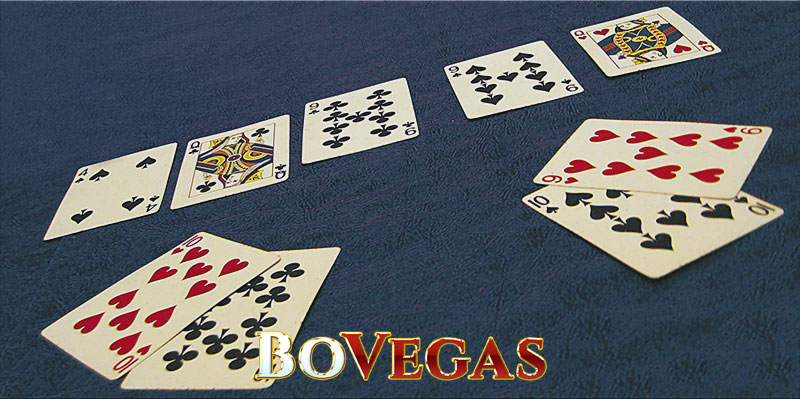



In this article, we’re going to discuss what is sometimes known as the nuclear bomb of no-limit hold’em: moving all-in before the flop! No matter how much we try to avoid it, there just comes a time in almost every tournament when we find ourselves sitting on a short or (at least shortish) stack. While this is not a desirable spot to be in, it does in some ways simplify our decision-making process; because we’re down to a kind of all-or-nothing situation. Either we’re going to fold our hand pre-flop or we’re going to push all-in, in the hopes of doubling up! There is really no in-between…
Why would we ever consider moving all-in-pre-flop and risking all of our chips? Well, there are really two good reasons for this.
For example, let’s say the blinds are $200 and $400, and we have just 10 big blinds. We have 4000 in our stack. And we’re in middle position, and we find ourselves with an Ace and a King. If we make a standard 3x raise and get called by a player on the button who has 30 big blinds in his stack, what happens whenever we see a flop of Seven of Diamonds, Four of Clubs, Nine of Diamonds? All we have is two overcards on the board. What does our opponent have? Did he hit? Does he have a pair? A flush draw?
With over eight big blinds in the pot and just seven big blinds left in our stack, what are we supposed to do? Do we bet our hand? What do we do if he calls? Are we supposed to check and see if our opponent is betting purely to put some pressure on us? If he does move in, are we supposed to call with just Ace-high? Are we supposed to fold? What do we do? This is a really tough dilemma. And it’s one that we could actually have avoided if we had just played our hand differently.
Let’s look at the same situation, but this time instead of raising three acts preflop we just move all-in.

So, how do you decide on whether or not to move all-in before the flop?
Well. As we’ve already pointed out, the most important factor in making this decision is really making the size of your chip-stack in relation to the size of the blinds. If you have a stack that’s only about 10 big blinds, you’re looking to move-in really in the early and middle positions with any pair and nearly any decent face card that has something with it, like, you know, King-Jack, King-Ten, Queen-Jack, Queen-Ten, those kinds of hands. Now, if you are in the late positions, like on the button, and everybody happens to fold around you on the button, and you’ve got (say) 10 to 12 big blinds, you could actually consider moving-in without looking at your cards, because the probability that the small blind and the big blind are gonna fold is so high that you’re almost always just going to get those blinds and antes into your stack. And you know what? If you do get called, you can still win; because, you know, any two cards can actually win!
Likewise, if everybody moves around to your small blind, and they’ve all folded, you could also move in the small blind without really looking at your cards when you’re in that serious serious danger zone of like 10 big blinds. Now, when you get into the 15 to 20 big blind range, you can be a little choosier about your hand selection because you still have time to wait, but you don’t want to be too much choosier. We mean, we wouldn’t recommend ever moving-in without looking at your cards when you have as much as 15 to 20 big blinds; you’re not that desperate yet!
Ideally, you always want to be the first player to act, when you finally do decide to move all-in. This is because it’s always better to bet all-in, than it is to call all-in for your tournament life, because your opponents can fold when you’re betting, and you can pick up all those blinds and antes. When you’re calling, you just have to win the hand.
Now, of course, when you have a really good hand, that you actually believe to be better than the hand your opponent has moved all-in with, like, you know, you have Aces or Kings or Ace-King or Queens or even a hand like Jacks, then calling all-in is certainly acceptable.
Another key to moving all-in preflop is timing. If you have a premium hand, you’re going to move all-in no matter what. But if you’re holding something more speculative, like King-Jack, you would ideally like to make this play against opponents who are likely to fold to your race.
If your stack isn’t very short, which is about 20 to 25 big blind range, then you can really use the all-in play as an effective way of re-shoving or re-raising an opponent when you can put a lot of pressure on him.
Let’s say again that the blinds are still that 200 and 400; and let’s say you have 20 big blinds in your stack. An opponent with 35 big blinds now makes a standard 3x raise from middle position, and you’re looking down to find a hand like Ace of Clubs, Jack of Clubs on the button. A hand that normally you might consider just calling with! Well, that is a good hand; but certainly, there are plenty of hands that beat it. Which means that calling that much of your stack when you’re already a little bit short might actually be a bad option. Instead, this is a spot where you really consider re-raising, and pushing all-in against your opponent, in order to push out any players with weaker hands than yours, and to apply the maximum amount of pressure to the original raiser. Without a premium hand of his own, your re-raise doesn’t give him the right odds to call, because he has to call 17X more, which is actually most of his stack. That means that not only can you steal the valuable blinds and the valuable antes in the pot, but you also get to steal his original raise! That gives you a lot of time to wait for a good thing to happen to you, so that you can really increase your stack later.

Casino gambling in North and South Korea is like a doughnut in a bakery — only the visitors can taste it. The countries do not allow their residents to participate in gambling activities provided by casino establishments, and they only provide gaming services to foreign visitors. However, there are always exceptions; and just like any […]
All astrology lovers out there, brace yourself for the most accurate zodiac sign guide which is going to help you to decide upon the most profitable casino game for you! We all know that each zodiac sign has its own set of individual peculiarities, and each one of them reveals a predisposition for different activities. […]
The cryptocurrency industry has already been taking over the traditional currency market and gradually squeezing out fiat money. After the introduction of the first Bitcoin in 2009, every hour that passes sees more people becoming fans of decentralized currency. The tremendous hype around digital money lies in their broad and innovative functionality: such as decentralized […]
Gambling has always been under the keen attention of governments. They either wanted to impose enormous taxes or ban it completely. As a result, casinos were looking for ways to escape the restrictive local legislation. And, when there was no Internet, gamblers had to seek different ways to play. From riverboats on paddlewheels to large […]
If you love gambling and have been to a land-based casino at least once, you may have thought about becoming a dealer. Playing the same game but from the opposite side, while communicating with other players, sounds like a dream job, right? A dealer is a straightforward job, and you will be the heart and […]
On Monday September 14, MGM announced that it plans to open its first smoke-free casino at the end of September, when Park MGM will finally reopen its venues to players and tourists. The resort comprises around 2,990 rooms and various restaurants, and it’s set to be reopened on September 30. The venue has been closed […]
Online gambling has undoubtedly taken a place of true supremacy over the casino industry during the pandemic. And the reason for that is quite clear: online casinos are more accessible, and you can always count on some encouragement from the casino administration to help you boost your game. However, this digital revolution has only been […]
The large selection of online gambling sites out there can make players somewhat puzzled, and give them a feeling of uncertainty about making the right choice of casino. Each online gambling venue offers its own conditions, games, and various bonuses, of course; but the most important thing is the reliability of the casino and the […]